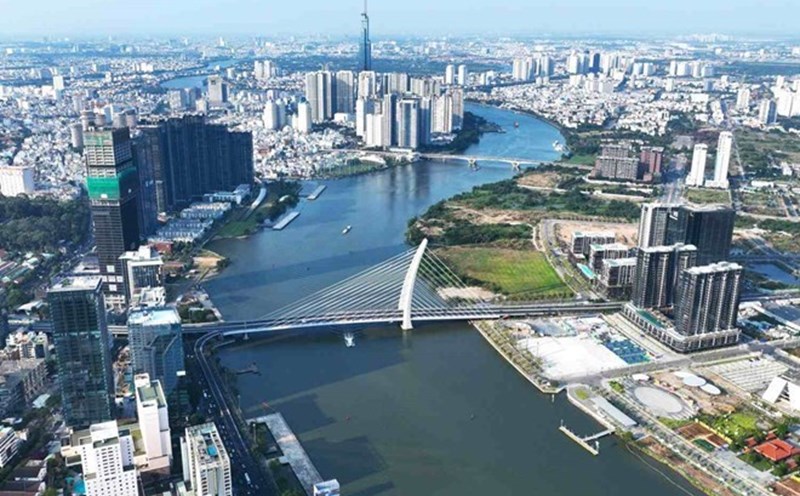Currently, localities are in the process of developing a Land Price List applicable from January 1, 2026.
In Hanoi, the Hanoi Department of Agriculture and Environment is soliciting opinions on the draft submission on the development of the first land price list to be announced and applied from January 1, 2026. Notably, this department proposed the highest land price in Hanoi for residential land on the routes of Hoan Kiem district (old) at more than 702 million VND per m2. The highest increase proposal is for suburban areas, with an increase of 16% to 26%.
In an interview with Lao Dong, Dr. Tran Xuan Luong - Deputy Director of the Vietnam Institute for Real Estate Market Research and Evaluation - commented that the proposal of some localities, including Hanoi, to increase the land price list at the present time is not in line with the direction on controlling real estate prices.
According to Mr. Luong, adjusting the land price list to increase when the market needs to stabilize can continue to escalate the real estate price level. When input costs increase, market sentiment is easily affected, creating conditions for speculators to take advantage to push up prices.
He said that updating the land price list close to market price is necessary, but it must be done at the right time and based on science. In fact, the work of building land price lists in many localities is still subjective, lacking complete survey data.
Many places only use average or estimated data, without reliable source data, while proposing to increase prices in the sensitive market period, said Mr. Luong.
Dr. Nguyen Van Khoi - Chairman of the Vietnam Real Estate Association - said that determining land prices and perfecting the legal framework on land, ensuring transparency and accurate reflection of the value of land use rights is a necessary requirement.
However, the adjustment process needs to be carried out in the direction of harmonizing the interests of the State, businesses and people.
Mr. Khoi emphasized that if prices increase too high, it will increase investment and production costs, affecting project progress and the competitiveness of the economy. The chain effect can cause the real estate market to stagnate, negatively affecting sectors such as construction, materials, finance - banking, thereby affecting GDP growth goals and stabilizing the macro economy.
Another consequence is that increasing land prices will push up housing prices, reducing people's access to housing. While the Government and localities are making efforts to find solutions to reduce real estate prices and input costs, increasing land prices will go against this goal, especially affecting the commercial housing segment and the ability to implement new projects.
If land prices in the Land Price List increase sharply, investment costs and housing prices will increase, reducing investment attraction in new development areas. Housing supply may continue to decline, causing difficulties in population dispersion and social security stabilization.
In addition, high land prices will increase financial obligations of people and businesses, including land use tax, land use conversion fees, and related fees. At the same time, the State must also bear additional costs for compensation and resettlement support.
Currently, the real estate market is still in the recovery phase, many businesses are restructuring and lacking capital. If land prices increase, this recovery process may be delayed. Along with that, rental prices are at risk of increasing, affecting students and workers renting accommodation in large cities. Therefore, the process of building and adjusting the Land Price List needs to be carried out cautiously, contributing to stabilizing the market and promoting sustainable economic development.










